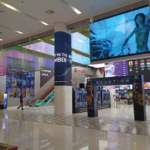Reality in Studio XR: Towards Higher Excellence
Reality in Studio XR: Towards Higher Excellence
Inavate Magazine interviewed and wrote about Dan Gray in this XR article. The full article can be found at the link below.
Daniel Gray director of Graymatter Video works alongside sister event production company iMAG. An XR stage encompasses many different mediums of virtual reality rather than just virtual reality, according to Gray. The LED screen technology used by XR stages developed in the last two years creates the environment around a subject or person using XR stages. LED XR stages aren’t green screens; they let you interact with the environment rather than have to imagine it as with green screen. By doing so, actors, presenters, or anyone within an environment can interact with the environment without having to imagine it. In addition to bringing augmented reality to the set, the server can also generate 3D objects that can be virtually inserted into the set using the servers.
A third key link is that media servers disguise in particular are at the forefront of being the digital glue that holds everything together. Real time engines, such as Notch, Unreal Engine and Unity, which are excellent at what they do, have been developed over the years to generate content, but they do not produce content for screens. The servers bring all of that together by integrating [these engines] into their systems further. Those with a background in the gaming world will be familiar with render engines such as Notch, Unreal Engine, and Unity, which have paved the way for leading AAA games in recent years in terms of rendering. With a push towards generating real time content for commercial AV purposes, these gaming technologies may become increasingly relevant in the industry, leading to AV/gaming convergence in an unexpected way.








No comment